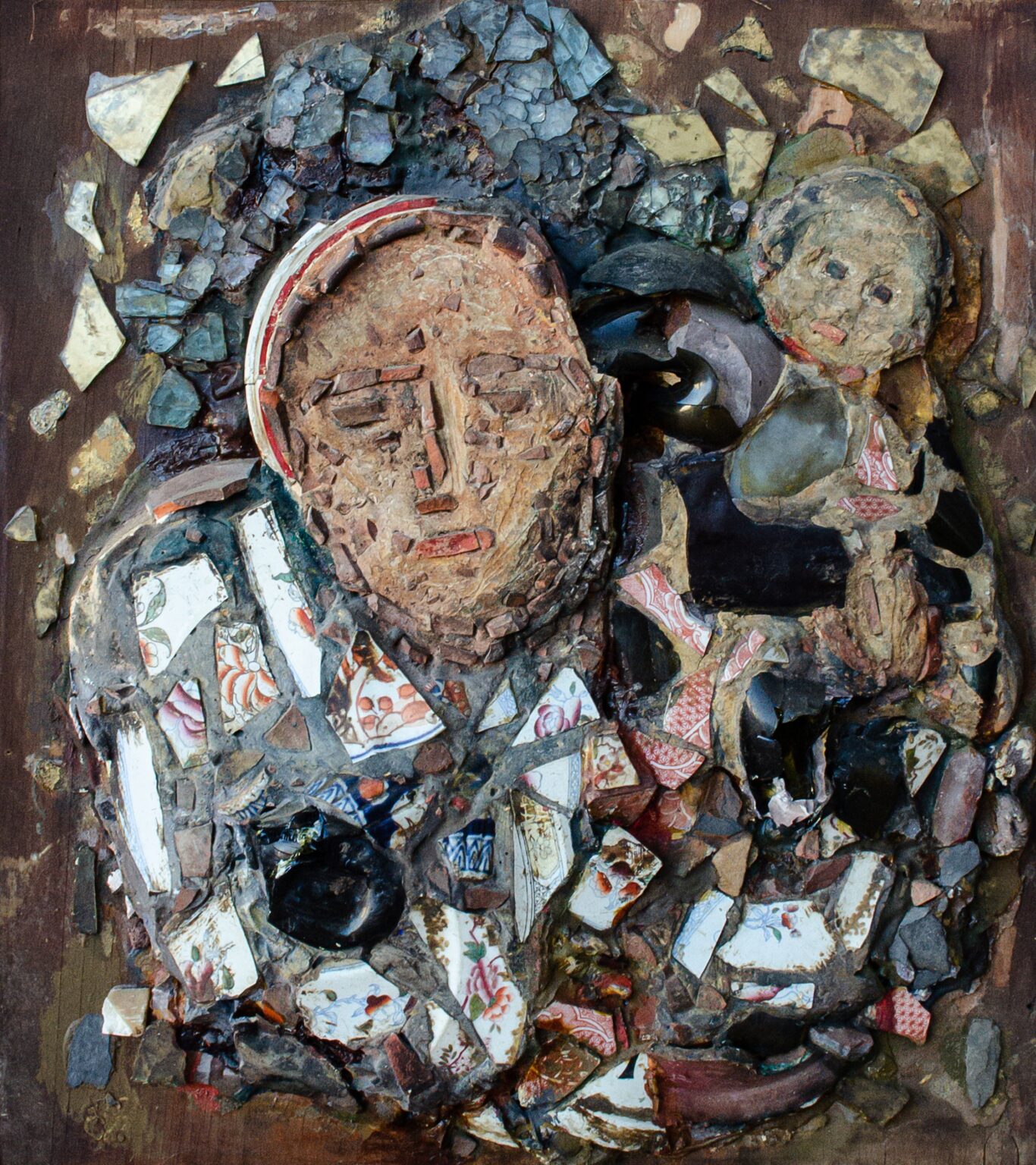
Artist: Samson Schames
Artist Nationality: German-American
Artist Dates: 1898-1967
Title: Mosaik No. 8 / Mother and Child
Date: c. 1940s
Condition: Good condition overall
Medium: Mixed media mosaic mounted to wood panel
Dimensions: 24 1/2 x 22 1/2 in.
Estimated Value: $4,500
Signature/Markings: Partial signature on partial exhibition label verso; Stamped name on faded exhibition label verso
Samson Schames came from one of the oldest Jewish families in Frankfurt, Germany. He was a many-faceted artist, who worked as a graphic, set and textile designer and painter. He was trained in the Staedelschule.
Schames began his art studies at the Offenbacher Kunstgewerbeschule, but his studies were interrupted by his conscription for service in the First World War. After the war, he continued his studies at the Frankfurter Kunstgewerbeschule. After 1928 he devoted himself intensively to painting.
After the rise of the Nazis to power in 1933, he was only able to exhibit his works in exhibitions of the Jüdischer Kulturbund or in his own studio. In 1937, at least seven of his works were confiscated from public collections as part of the Nazi campaign against "Degenerate Art" .
Due to the increasing persecution of Jews by the Nazis, Schames left Germany with his wife, Edith, in 1939 and went to London, where he was active in the "Free German League of Culture in Great Britain." In 1948, he moved with Edith to New York, where he died in 1967. (Bio sourced from Wikipedia)
About his mosaics, the Leo Baeck Institute has written: "While interned as an enemy alien in England, Schames continued creating art. Because there were no brushes or paint available, Schames used broken objects in collages and mosaics to express the broken world around him. He utilized unusual materials for his art, including shards of glass, nails and stones—sometimes scavenged from the wreckage of the Blitz. Often referring to Jewish religion and tradition, Schames’ art depicted the tragedy of Jewish persecution and the horror of WWII through symbolism. The mosaic displayed here is typical of Schames’ raw and forceful style. Scratches and broken pieces of material outline a mournful human face. The large, teardrop-shaped hole, from which the artwork derives its ambiguous name, is both a powerful expression of grief and an actual rift in the surface of the work.
All but a handful of his mosaics are lost. Two glass mosaics were recently restored by the Jewish Museum in Frankfurt, which presented the last major showing of Schames’ mosaics in 1989. Additional mosaics are held by the LBI and Yeshiva University Museum."
Select artist museum collections:
Jüdisches Museum, Frankfurt
Städel Museum, Frankfurt
Leo Baeck Institute, Center for Jewish History, New York
Yeshiva University Museum, New York
Museum Kunst Der Verlorenen Generation, Salzburg
Provenance:
Private New York Collection
Exhibition History:
Publication History: